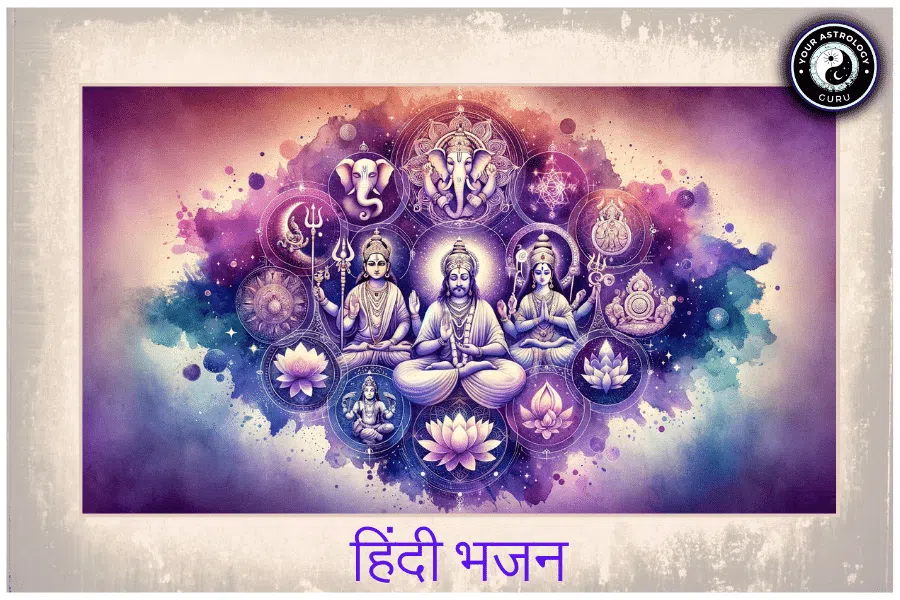Hindu astrology, also known as Vedic astrology, is an ancient system of astrology that originated in India. It is based on the belief that the positions and movements of celestial bodies can have a profound influence on human life. One of the key components of Hindu astrology is the birth chart, also known as the horoscope or Kundli. This chart is a snapshot of the sky at the time of a person’s birth and provides valuable insights into their personality, life path, and future.
The Hindu astrology chart holds great significance in a person’s life. It is believed to be a blueprint of their destiny and can provide guidance on various aspects of life, including career, relationships, health, and spirituality. By understanding the different elements of the chart and how they interact with each other, individuals can gain a deeper understanding of themselves and make informed decisions that align with their true purpose.
Table of Contents
Understanding the Basics of Hindu Astrology Chart
The birth chart is the foundation of Hindu astrology. It is created based on the date, time, and place of a person’s birth. The chart consists of twelve houses, each representing different areas of life, such as career, relationships, and finances. The positions of the planets at the time of birth are also plotted on the chart.
The planetary positions in the birth chart have a significant influence on a person’s life. Each planet represents different qualities and energies that shape an individual’s personality and experiences. For example, the Sun represents vitality and self-expression, while Venus represents love and relationships. The interactions between these planets can create harmonious or challenging aspects in a person’s life.
Exploring the Nine Planets
In Hindu astrology, there are nine planets that are considered significant: Sun, Moon, Mars, Mercury, Jupiter, Venus, Saturn, Rahu (North Node), and Ketu (South Node). Each planet has its own characteristics and influences different aspects of life.
The Sun represents the self, ego, and vitality. It is associated with leadership, confidence, and creativity. The Moon represents emotions, intuition, and nurturing qualities. It influences a person’s emotional well-being and their ability to connect with others on an emotional level.
Mars is the planet of action, energy, and passion. It represents courage, ambition, and assertiveness. Mercury is the planet of communication, intellect, and learning. It influences a person’s thinking patterns, communication style, and ability to learn and adapt.
Jupiter is the planet of expansion, growth, and wisdom. It represents abundance, optimism, and higher knowledge. Venus is the planet of love, beauty, and harmony. It influences a person’s relationships, values, and aesthetic preferences.
Saturn is the planet of discipline, responsibility, and structure. It represents hard work, perseverance, and life lessons. Rahu and Ketu are known as the shadow planets and represent karmic influences. They can bring unexpected changes and challenges in a person’s life.
The Role of Ascendant
The ascendant, also known as the rising sign, is one of the most important elements in the Hindu astrology chart. It is determined by the sign that was rising on the eastern horizon at the time of birth. The ascendant represents a person’s outer personality and how they present themselves to the world.
The ascendant has a significant influence on a person’s life path and personality traits. It determines the overall tone of the chart and can modify the effects of other planets. For example, if someone has Aries as their ascendant, they may have a strong sense of self-identity and be assertive in their actions.
The ascendant also plays a role in determining a person’s physical appearance and health. Each sign has its own characteristics that can manifest in a person’s physical features. For example, someone with Taurus as their ascendant may have a strong and sturdy physique.
The Twelve Houses of Hindu Astrology Chart
The Hindu astrology chart is divided into twelve houses, each representing different areas of life. These houses provide insights into various aspects of a person’s life, including career, relationships, health, and spirituality.
The first house, also known as the ascendant, represents the self and how a person presents themselves to the world. It influences their physical appearance, personality traits, and overall outlook on life.
The second house represents wealth, possessions, and material resources. It influences a person’s financial situation and their ability to accumulate wealth.
The third house represents communication, siblings, and short-distance travel. It influences a person’s communication style, relationship with siblings, and their inclination towards travel.
The fourth house represents home, family, and roots. It influences a person’s relationship with their family, their sense of security and stability, and their connection to their cultural heritage.
The fifth house represents creativity, romance, and children. It influences a person’s creative expression, romantic relationships, and their experience of parenthood.
The sixth house represents health, work, and service. It influences a person’s physical well-being, their work environment, and their attitude towards service and helping others.
The seventh house represents partnerships and marriage. It influences a person’s relationships with others, their ability to form partnerships, and their approach to marriage.
The eighth house represents transformation, secrets, and shared resources. It influences a person’s ability to handle change and transformation in their life, their relationship with money and shared resources, and their interest in occult or mystical subjects.
The ninth house represents higher knowledge, spirituality, and long-distance travel. It influences a person’s spiritual beliefs and practices, their interest in philosophy or religion, and their inclination towards long-distance travel or higher education.
The tenth house represents career, reputation, and public image. It influences a person’s professional aspirations, their reputation in their chosen field, and their overall public image.
The eleventh house represents friendships, social networks, and goals. It influences a person’s ability to form and maintain friendships, their involvement in social groups or organizations, and their ability to achieve their goals.
The twelfth house represents spirituality, solitude, and hidden enemies. It influences a person’s spiritual practices, their need for solitude or retreat, and their ability to overcome hidden obstacles or enemies.
Interpretation of Planetary Aspects
In Hindu astrology, planetary aspects refer to the relationships between different planets in the birth chart. These aspects can be harmonious or challenging and can have a significant influence on a person’s life.
Harmonious aspects, such as trines and sextiles, indicate ease and flow between the planets involved. They can bring positive opportunities, growth, and abundance in the areas of life represented by those planets.
Challenging aspects, such as squares and oppositions, indicate tension and conflict between the planets involved. They can bring challenges, obstacles, and lessons that need to be overcome in order to grow and evolve.
Interpreting planetary aspects in the birth chart requires an understanding of the qualities and energies represented by each planet. For example, if someone has a harmonious aspect between Venus and Jupiter, it may indicate a natural talent for attracting abundance and good fortune in their relationships or creative pursuits.
On the other hand, if someone has a challenging aspect between Mars and Saturn, it may indicate a tendency towards frustration or delays in their actions or career pursuits. Understanding these aspects can help individuals navigate through challenges and make the most of the opportunities presented to them.
Finding Your Dharma
In Hindu astrology, the concept of dharma refers to one’s life purpose or true calling. The birth chart can provide valuable insights into a person’s dharma by analyzing the placement of planets and houses.
Each house in the birth chart represents a different aspect of life, and the planets placed in those houses can indicate the areas where a person is likely to find fulfillment and purpose. For example, if someone has Jupiter placed in the tenth house of career, it may indicate that their dharma lies in a profession that involves teaching, mentoring, or guiding others.
By understanding their dharma, individuals can align their actions and choices with their true purpose. This can bring a sense of fulfillment, satisfaction, and success in their chosen path.
Predictive Astrology
Predictive astrology is an important aspect of Hindu astrology. It involves analyzing the planetary positions and aspects in the birth chart to make predictions about future events and trends in a person’s life.
By studying the movement of planets over time, astrologers can make predictions about various aspects of a person’s life, such as career changes, relationship developments, health issues, and financial opportunities. This can provide individuals with valuable insights and guidance to make informed decisions and navigate through different phases of life.
Predictive astrology can also help individuals understand the timing of events in their life. By analyzing planetary transits and progressions, astrologers can determine when certain events are likely to occur or when certain energies will be more prominent in a person’s life.
Remedies for Negative Planetary Effects
In Hindu astrology, it is believed that certain planetary positions or aspects can have negative effects on a person’s life. These negative effects can manifest as challenges, obstacles, or difficulties in various areas of life.
To counteract these negative effects, there are various remedies that individuals can undertake. One common remedy is wearing gemstones that correspond to specific planets. Each gemstone is believed to have specific energies that can balance or enhance the qualities represented by the corresponding planet.
Another remedy is reciting mantras or prayers that are associated with specific planets. These mantras are believed to invoke the positive energies of the planets and can help individuals overcome challenges or attract positive outcomes.
In addition to gemstones and mantras, there are also specific rituals or practices that can be performed to appease or strengthen certain planets. These rituals may involve offerings, prayers, or specific actions that are believed to please the corresponding planet and mitigate its negative effects.
It is important to note that remedies should be undertaken with guidance from a knowledgeable astrologer. They should be seen as supportive tools rather than magical solutions, and individuals should also take practical actions to address any challenges or difficulties in their life.
The Importance of Timing
In Hindu astrology, timing is considered crucial for the success of any endeavor. The concept of muhurta refers to choosing an auspicious time for important events, such as starting a new business, getting married, or buying a new property.
By analyzing the planetary positions and aspects at a specific time, astrologers can determine the most favorable time for a particular event. This can help individuals maximize their chances of success and minimize potential challenges or obstacles.
Choosing an auspicious time involves considering various factors, such as the positions of the planets, the lunar phase, and the astrological significance of the day. It is believed that by aligning with the energies of the universe at a favorable time, individuals can enhance their chances of success and create a positive foundation for their endeavors.
The Hindu astrology chart holds immense wisdom and guidance for individuals seeking to understand themselves and navigate through life’s challenges. By understanding the basics of the chart, exploring the influence of planets and houses, interpreting planetary aspects, finding one’s dharma, utilizing predictive astrology, applying remedies for negative planetary effects, and considering the importance of timing, individuals can embrace their life path and achieve their goals with the help of their chart.
It is important to approach astrology with an open mind and a willingness to take responsibility for one’s own choices and actions. Astrology can provide valuable insights and guidance, but ultimately, it is up to each individual to make the most of the opportunities and challenges presented to them. By embracing their chart and aligning with their true purpose, individuals can lead a fulfilling and meaningful life.















